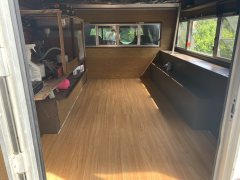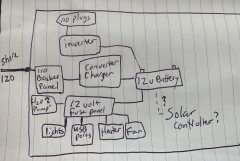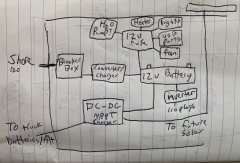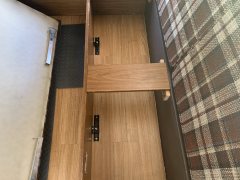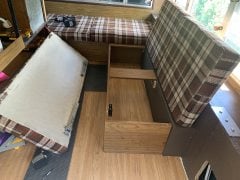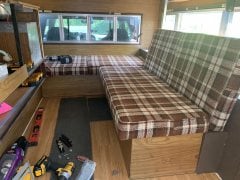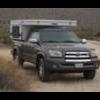I decided to go with some vinyl stick together planks from TrafficMaster. Adding trim and L-tracks (this is how I am going to reinstall the couch so I can take it out with some ease to have more hauling space when not camping) are the next steps. Once those are in the couch will go back in. Hopefully those pieces arrive this week.
Starting to shop for the electrical upgrade. Need to add a converter/charger, 12 volt fuse box, and an inverter. I have been reading and watching tons about 12 volt systems but am still a tiny bit confused. I have been looking for a good wiring diagram but cannot see to find one that isn't really confusing.




